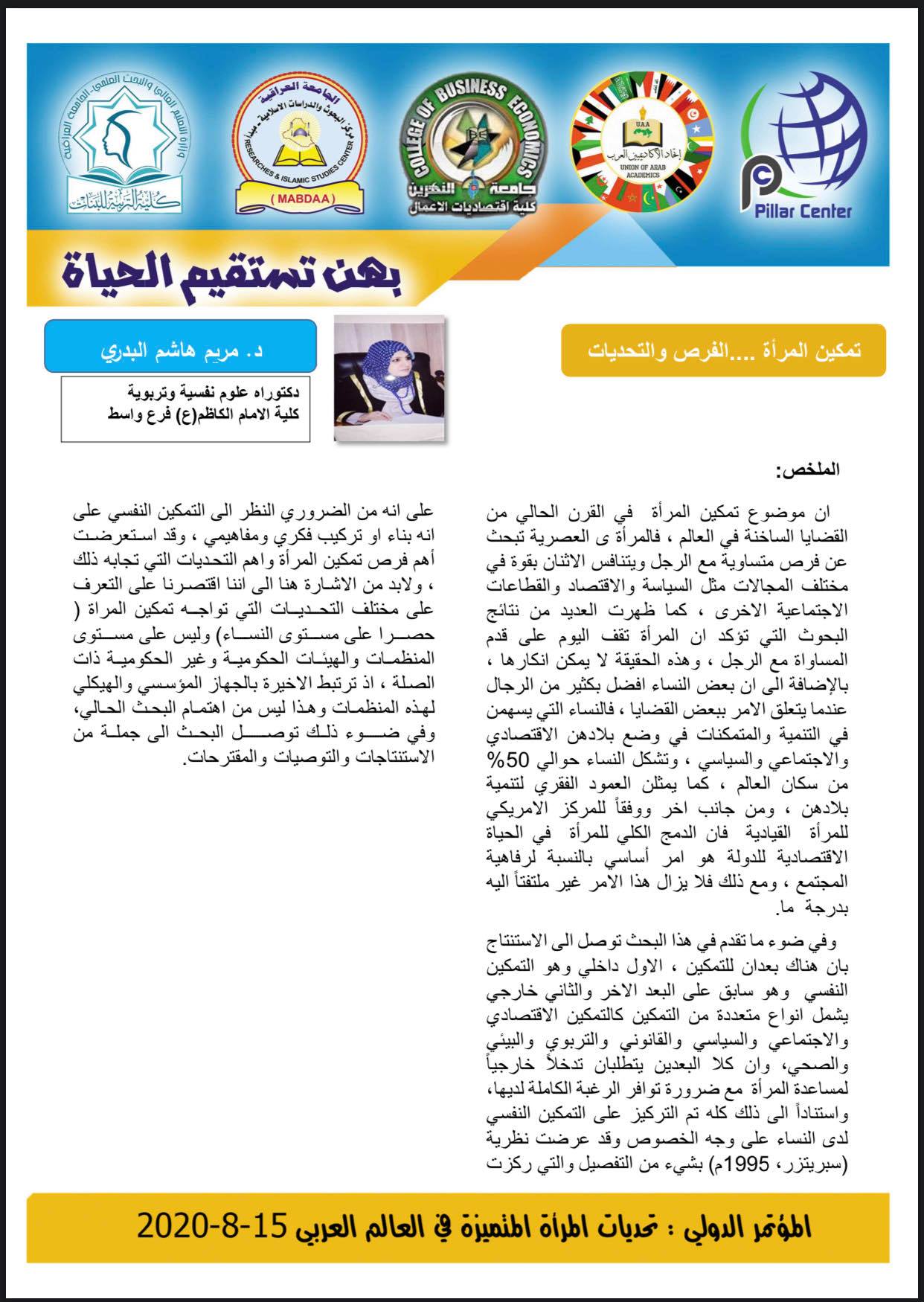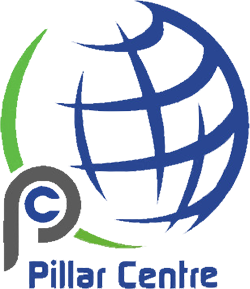Empowering Women… Opportunities and Challenges
Dr. Maryam Hashem Al-Badri
PhD in Psychological and Educational Sciences – Imam Kadhim College.
Summary:
The issue of women’s empowerment in the current century is one of the hot issues in the world, as modern women are looking for equal opportunities with men while the two compete strongly in various fields such as politics, economy and other social sectors. Many research results have emerged confirming that women today stand on an equal footing with men. This fact cannot be denied! In addition to that some women are much better than men when it comes to some issues. On the other hand, according to the American Center for Women in Leadership, the total inclusion of women in the economic life of the state is fundamental to the well-being of society, and yet this matter is still not paid attention to some degree.
In light of the foregoing in this research, I came to the conclusion that there are two dimensions of empowerment, the first is internal, which is psychological empowerment, which precedes the other dimension, and the second is external, which includes multiple types of empowerment such as economic, social, political, legal, educational, environmental and health empowerment, and that both dimensions require external intervention to help women with the necessity of having full desire. Based on all this, the focus has been on psychological empowerment among women in particular. The (Spitzer, 1995) theory was presented in some detail, which focused on the need to view psychological empowerment as an intellectual and conceptual structure or structure. It reviewed the most important opportunities for women’s empowerment and the most important challenges facing this. It should be noted here that we were limited to identifying the various challenges facing women’s empowerment (exclusively at the level of women) and not at the level of relevant governmental and non-governmental organizations and bodies, as the latter is linked to the institutional and the structure apparatus of these organizations while this is not the interest of the current research. In the light of this, the research reached a number of conclusions, recommendations and suggestions.













Leave a Reply